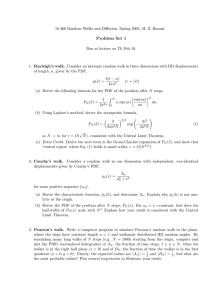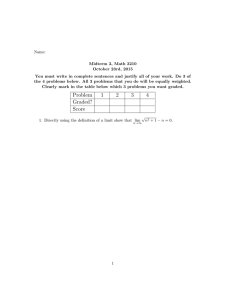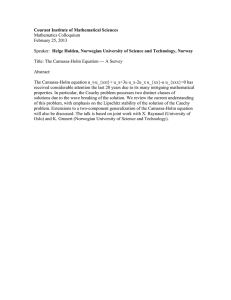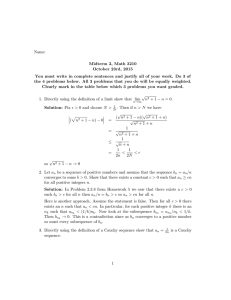Problem Set 1
advertisement
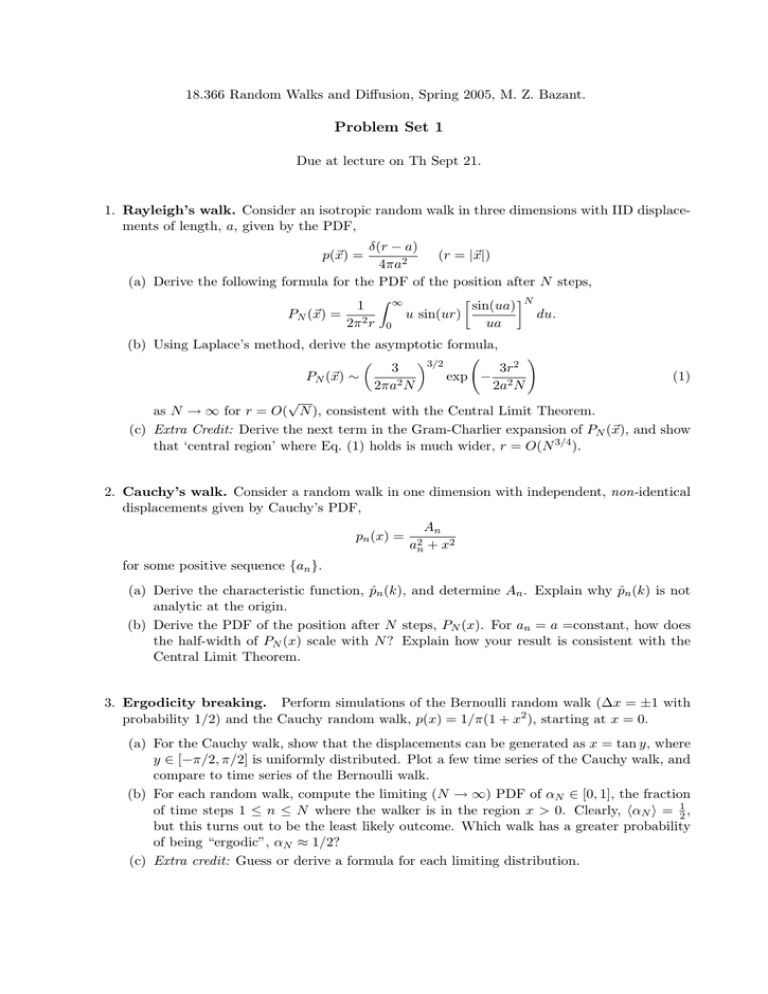
18.366 Random Walks and Diffusion, Spring 2005, M. Z. Bazant.
Problem Set 1
Due at lecture on Th Sept 21.
1. Rayleigh’s walk. Consider an isotropic random walk in three dimensions with IID displace­
ments of length, a, given by the PDF,
δ(r − a)
(r = |�x|)
4πa2
(a) Derive the following formula for the PDF of the position after N steps,
p(�x) =
1
PN (�x) = 2
2π r
� ∞
0
sin(ua)
u sin(ur)
ua
�
�N
du.
(b) Using Laplace’s method, derive the asymptotic formula,
�
PN (�x) ∼
3
2πa2 N
�3/2
�
�
3r2
exp − 2
2a N
(1)
√
as N → ∞ for r = O( N ), consistent with the Central Limit Theorem.
(c) Extra Credit: Derive the next term in the Gram-Charlier expansion of PN (�x), and show
that ‘central region’ where Eq. (1) holds is much wider, r = O(N 3/4 ).
2. Cauchy’s walk. Consider a random walk in one dimension with independent, non-identical
displacements given by Cauchy’s PDF,
pn (x) =
a2n
An
+ x2
for some positive sequence {an }.
(a) Derive the characteristic function, p̂n (k), and determine An . Explain why p̂n (k) is not
analytic at the origin.
(b) Derive the PDF of the position after N steps, PN (x). For an = a =constant, how does
the half-width of PN (x) scale with N ? Explain how your result is consistent with the
Central Limit Theorem.
3. Ergodicity breaking. Perform simulations of the Bernoulli random walk (Δx = ±1 with
probability 1/2) and the Cauchy random walk, p(x) = 1/π(1 + x2 ), starting at x = 0.
(a) For the Cauchy walk, show that the displacements can be generated as x = tan y, where
y ∈ [−π/2, π/2] is uniformly distributed. Plot a few time series of the Cauchy walk, and
compare to time series of the Bernoulli walk.
(b) For each random walk, compute the limiting (N → ∞) PDF of αN ∈ [0, 1], the fraction
of time steps 1 ≤ n ≤ N where the walker is in the region x > 0. Clearly, �αN � = 12 ,
but this turns out to be the least likely outcome. Which walk has a greater probability
of being “ergodic”, αN ≈ 1/2?
(c) Extra credit: Guess or derive a formula for each limiting distribution.
